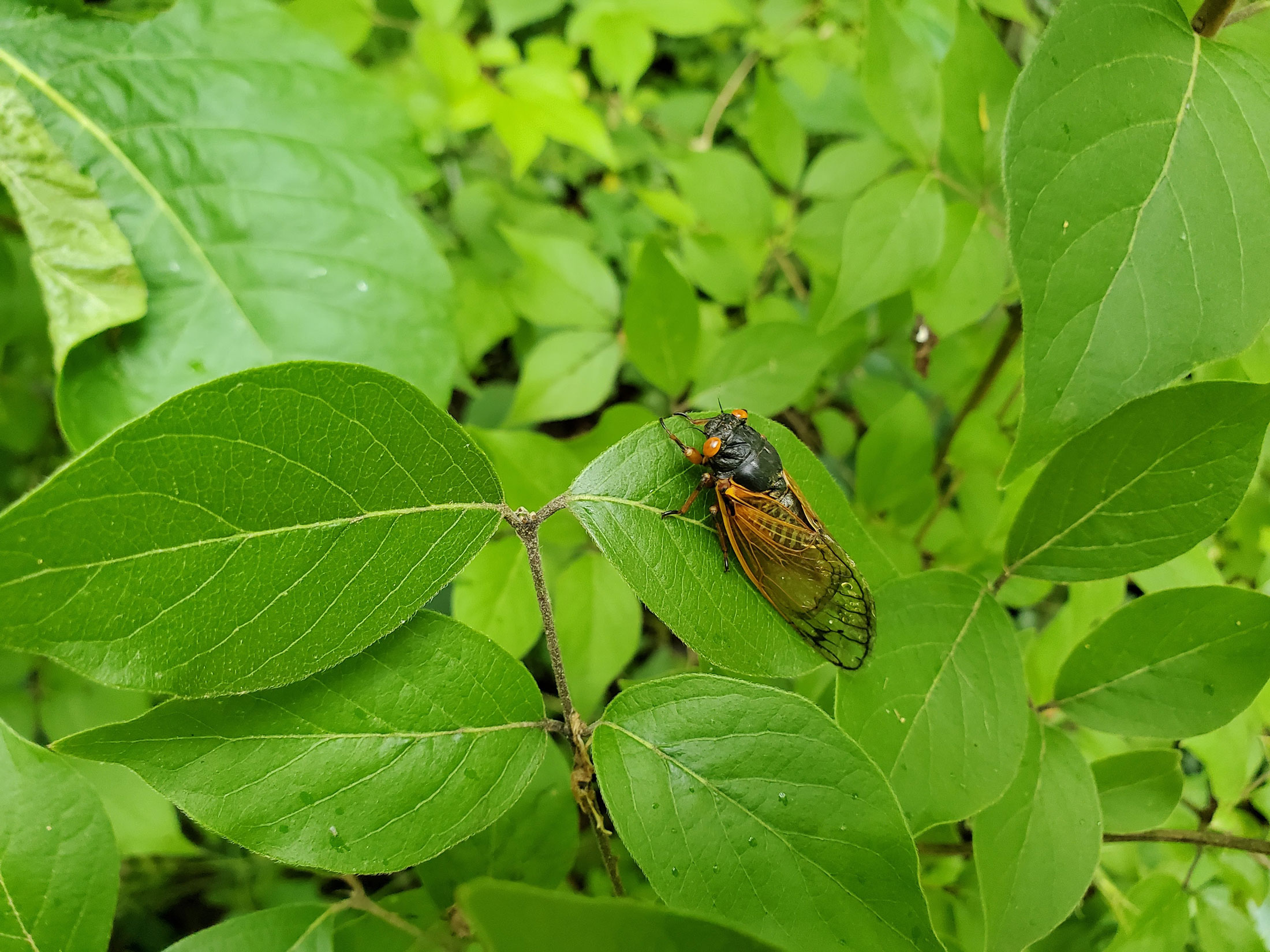
During the summer of 2011, billions of cicada eggs hatched inside tree twigs across the Southeast. The hatchlings, called nymphs, dropped down and burrowed into the ground, where they’ve been sucking on tree roots ever since.
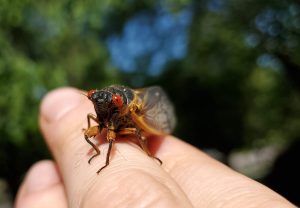
This spring, the insects will return to the surface, where they will crawl up onto the trees, shed their skin, and emerge as adults, ready to mate and start the cycle again. Dubbed “The Great Southern Brood,” this group of periodical cicadas is expected to appear in more than a dozen states, including East Tennessee. Unlike other cicada species, which are green in color and emerge in the summer each year, these periodical cicadas are smaller, with red eyes and wing veins. In the years they appear, they come out in late April and early May, remaining present for four to six weeks.
The cicadas set to emerge this year are part of Brood XIX, one of 15 periodical cicada broods in the United States. Of those, 12 reproduce in 17-year cycles and three—including Brood XIX—in 13-year cycles. Two broods will appear in the United States this year, with the second being the 17-year Brood XIII in the Midwest. Next year, the 17-year Brood XIV, whose recorded range encompasses a larger portion of the park, will come out for the first time since 2008.
While the park doesn’t list any records of Brood XIX, during the last emergence in May 2011, there was one report of a periodical cicada calling near its western boundary. To verify this brood occurs inside the park, scientists will visit the same area this spring to listen for the cicadas’ distinctive calls. They’ll have more help this year than they did in 2011, when smartphones were less prevalent and community science tools like iNaturalist were still in their infancy. This time around, anybody visiting the park can help gather data by recording what they see and hear.
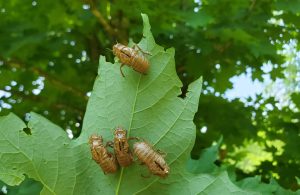
Other evidence also points toward Brood XIX’s existence within the park. Will Kuhn, director of science and research for Discover Life in America, one of the park’s four nonprofit partners, explained that periodical cicada broods often have “stragglers,” and they can come out a little early or a little late. Last year, Kuhn heard some of these stragglers in multiple places within the park and received reports from others who heard them too.
“They were unmistakably periodical cicadas,” he said, “so we think they’re probably from this brood.”
Periodical cicadas’ adherence to prime-numbered 13- and 17-year schedules is likely a hedge against predation, Kuhn said. Predator species tend to follow a boom-or-bust cycle that takes just a few years to complete, so the cicadas’ reproductive rhythm reduces their chances of colliding with a predator boom year too often. Mass emergence offers an additional protection—not so much for individual cicadas, which are a coveted food source for everything from birds to bears, but for the population as a whole.
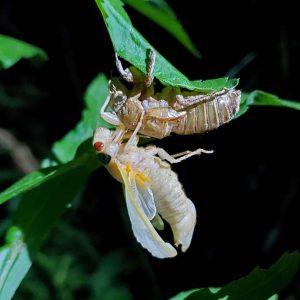
“This mass emergence functions to inundate the predators so that, even after all the predators are full, there are still more cicadas that can lay eggs and pass their genes on to the next generation,” Kuhn said.
Any given brood of periodical cicadas emerges in sync, once the soil temperature reaches 64 degrees, said Smokies entomologist Becky Nichols. They’re already appearing in Georgia and likely to do so in East Tennessee—and possibly the Smokies— in late April or early May.
“Some of the people that have been calling in to the park have been wanting to avoid camping during that time because they figure it’s going to be too noisy or too many bugs flying around,” she said. “They probably picture millions of cicadas flying around, and it won’t be like that.”
Cicadas can be noisy—an especially robust chorus can be as loud as a motorcycle heard from 25 feet away—but the adults don’t fly much and don’t swarm in flocks.
However, people experiencing a cicada hatch might notice the husks the larvae shed as they emerge scattered on the ground or stuck to trees. After molting, the adults will often sit on trees nearby until later ascending to the canopy. Then, the males will start calling—an invitation for the females, which remain silent, to come over and mate. A single female can lay up to 600 eggs, nestling about two dozen at a time in slits she makes in tree twigs. After four to six weeks, the adults die off, and the chorus stops.
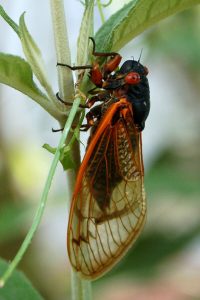
This spring, Kuhn and Nichols are excited to learn something new about cicada biodiversity in the Smokies that won’t be possible again for another 13 years. While typically referred to as a monolith, Brood XIX is actually made up of four different cicada species, three of which have been documented to occur nearby. Because they spend so much time high in the trees, it can be hard to get close enough for visual identification, but their call gives them away.
Kuhn is encouraging anyone visiting the park this spring to record any cicada calls they may hear and submit those observations—along with location data—via the app iNaturalist. Other cicada species, which are present every year, don’t start calling until later in the summer, so any cicada calls heard over the coming weeks will certainly belong to periodical species. Currently, ten different cicada species have been confirmed in the park. If all three of the nearby species that make up Brood XIX are documented this year, that number will rise to 13.
Kuhn is especially interested in monitoring Look Rock Campground and Whiteoak Sink, where the stragglers were heard last year. Based on current range mapping, the west end of the park is the most likely place to experience the cicada emergence, Nichols said, including Foothills Parkway West, the Chilhowee area, and the Abrams Creek Campground area. Wherever they appear, the cicadas indicate a healthy subterranean environment—and a smorgasbord for wildlife.
“A lot of different wildlife,” Nichols said, “will be spending a lot of time feeding on cicadas.”
Subscribe to get the latest posts sent to your email.
The Great Smokies Welcome Center is located on U.S. 321 in Townsend, TN, 2 miles from the west entrance to Great Smoky Mountains National Park. Visitors can get information about things to see and do in and around the national park and shop from a wide selection of books, gifts, and other Smokies merchandise. Daily, weekly, and annual parking tags for the national park are also available.